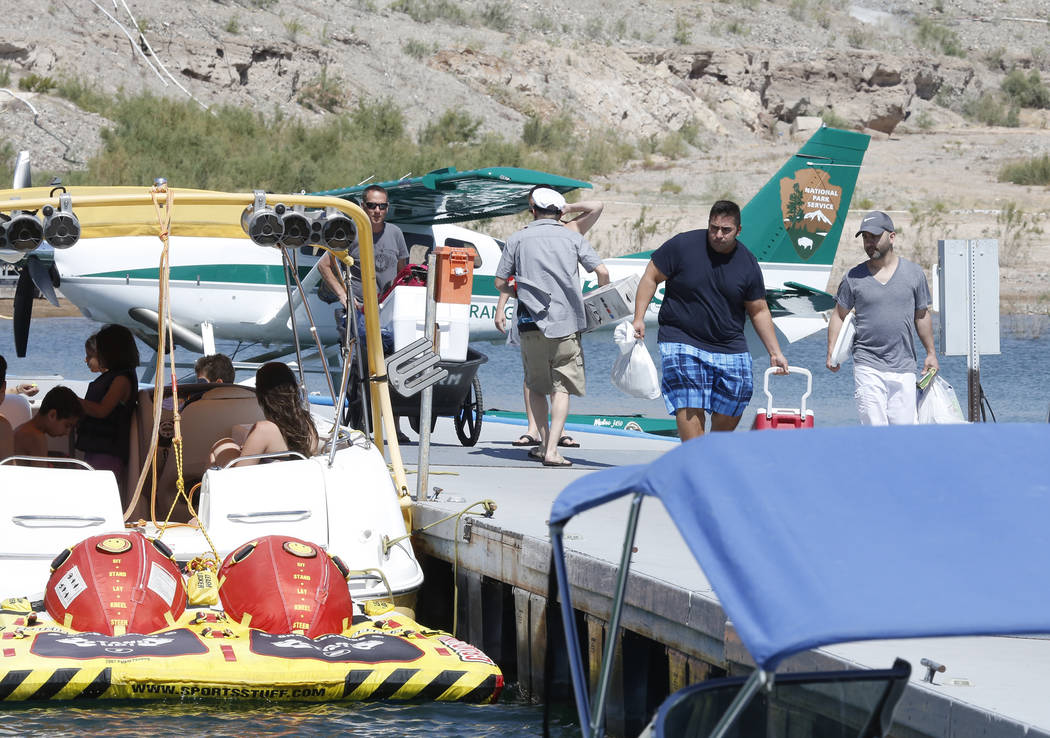Be aware of summer storms while enjoying a day at the lake


Imagine you are enjoying a day of boating or fishing on your favorite desert lake. It’s a beautiful summer day, and you have managed to carve out some time away from everyday life to spend with family or friends.
In the sky there are a few clouds, but nothing threatening overhead. Anything ominous looking is miles away. Like the distant mountain you see shrouded in darkening clouds or even heavy rainfall.
“Not to worry,” you say to yourself, “That is a long way off.”
You go back to what you were doing and time passes. You are having such an enjoyable time that you don’t notice the dark clouds are moving closer. Suddenly, your fun is disrupted by the clap of thunder and the flash of lightning. Just as abruptly the wind picks up. Within minutes, the waves grow large enough to make the going tough and you struggle to make headway.
You and your passengers are in trouble.
This is a common occurrence at waters across the Southwest, especially during the summer monsoon season when powerful thunderstorms come up quickly and seemingly out of nowhere. There is a beauty in these storms, but they can be just as dangerous to boaters and other recreationists as they are powerful, something I saw firsthand while working as a game warden on Lake Mead and Lake Mohave.
In one instance, I spent a couple of tense late-night hours gathering a dozen scared people — children and adults — from the shoreline where their boat had run aground during a summer thunderstorm. I didn’t tell them I was scared, too. At one point during the process, the water in my boat was ankle deep. Their boat was a total loss.
According to the 2016 recreational boating statistics compiled by the U.S. Coast Guard, there were 4,463 recreational boating accidents involving 701 deaths last year. Those figures represent an increase of 7.3 percent and 12 percent. Financially, those accidents resulted in $49 million in property damage.
Nationwide, weather was a primary contributing factor in 214 boat accidents and hazardous waters in 205. Weather and hazardous waters are seventh and ninth on the list of top-10 contributing factors.
In Nevada, there were 48 boating accidents resulting in 36 injuries and four fatalities in 2016. Three of those accidents and one fatality were attributed to hazardous waters.
The first step in avoiding weather-related boating accidents is checking the weather forecast before your adventure begins and throughout the day. In today’s world of hand-held technology, there is no excuse for not doing so. Though there are some areas of Lake Mead and Lake Mohave where cell service is unavailable, there are many locations where it is.
There is also the old-fashioned method of looking to the sky. During the summer, most thunderstorms come from the south or southwest. By keeping on eye on those horizons, you can see the early beginnings of thunderstorms. Look for white clouds that seem to appear out of nowhere. When they begin to take on a darker hue, it’s time to pay attention.
Sudden increases in wind speed or changes in direction also are indicators that something is in the works. When you see these signs, it’s a good idea to work your way back toward the marina or launch ramp. Just getting close enough to duck in the marina if a storm erupts is better than staying out in the open basin.
Should you get caught in the open by a sudden storm, forget trying to race it to a marina. You can’t outrun a fast-moving thunderstorm. Put on your life jacket and look for a cove that offers protection from the wind and especially the waves. You want to find something that will put a strip of land between you and the open water. That will provide at least some protection from the pounding of wind-driven waves.
Be prepared to remain where you are until the storm is over and the waves calm down. That means you might want to carry extra food and water.
Freelance writer Doug Nielsen is a conservation educator for the Nevada Department of Wildlife. His “In the Outdoors” column, published Thursday in the Las Vegas Review-Journal, is not affiliated with or endorsed by the NDOW. Any opinions are his own. Find him on Facebook at @dougwritesoutdoors. He can be reached at intheoutdoorslv@gmail.com.












